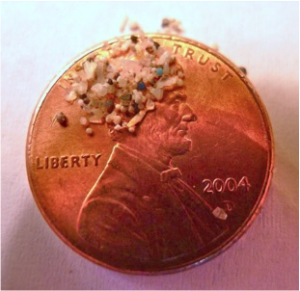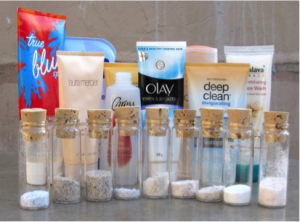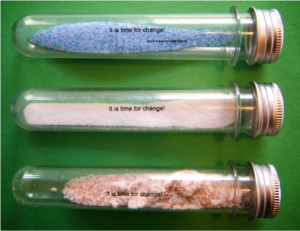
2015 Green Summit Update (October 19, 2015)
Thank you to our esteemed panelists and all who attended our Green Summit panel discussion on climate change. We filled Golden Auditorium and hosted people in an overflow room. We had terrific audience participation and the panelist fielded some excellent questions regarding climate change in our time and on our campus.
Below, we are posting the video recording of the discussion. In response to one of the questions from the audience, we also wanted to follow up with a few resources we think you might find interesting:
***SAVE THE DATE: Our next panel discussion in this series will take place on April 5, 2016 at 4:30 p.m. in Golden Auditorium. Follow our blog for ongoing updates.
PANEL DISCUSSION: 9/17/2015 AT 4:30 PM IN GOLDEN AUDITORIUM
https://www.youtube.com/watch?v=xuTCaI1k7kQ
2015 Green Summit Original Post (September 1, 2015)
On September 17, the Office of Sustainability will be hosting the 15th annual Green Summit. The title of this year’s event will be Climate Change in Our Time.
As you likely know, the end of 2015 is gearing up to be a momentous year for climate issues globally, nationally, and here on campus. In June, Pope Francis released his heavily anticipated encyclical on the environment. In August, the White House finalized the Clean Power Plan, its flagship policy to combat carbon emissions from power plants. This coming December at the 21st meeting of the Conference of Parties (COP-21) in Paris, there are high expectations for a global agreement on emissions reductions. And here at Colgate, we are in the midst of updating our plan to achieve climate neutrality by 2019. The purpose of this year’s Green Summit is to highlight issues of climate change (at Colgate and beyond) from various faculty perspectives.
The 2015 Green Summit will kickoff at 4:30 p.m. in Golden Auditorium (Little Hall) with a faculty panel discussion.
Panelists for this events include:
- Adam Burnett, William R. Kenan Jr. Professor of Geography
- April Baptiste, Associate Professor of Environmental Studies
- Engda Hagos, Assistant Professor of Biology
- Mark Shiner, University Chaplain and Catholic Campus Minister
- Peter Klepeis, Professor of Geography
The panel will be moderated by John Pumilio, Director of Sustainability. We will invite questions/comments from the audience.
MERCHANTS OF DOUBT: 9/17/2015 AT 9:00 PM AT THE HAMILTON MOVIE THEATER
At 9:00 p.m., the 2015 Green Summit will conclude with a private showing of Naomi Oreskes’ award-winning documentary, Merchants of Doubt. The program will take place at the Hamilton  Movie Theater. Seating is limited and tickets will be given on a first-come, first-served basis. Tickets are FREE and can be picked up in the Ho Science Center room 245 (Steve Dickinson’s office) or in Lathrop Hall room 109M (John Pumilio’s office).
Movie Theater. Seating is limited and tickets will be given on a first-come, first-served basis. Tickets are FREE and can be picked up in the Ho Science Center room 245 (Steve Dickinson’s office) or in Lathrop Hall room 109M (John Pumilio’s office).
To follow the latest news, like us on Facebook and follow us on Twitter.
To submit questions in advance of the forum, use #GateGreenSummit.
The 2015 Green Summit is sponsored by CORE Scientific Perspectives, Environmental Studies, Lampert Institute, Office of Sustainability, Upstate Institute.
**We encourage all Green Summit attendees to attend a special event hosted by the Lampert Institute for Civic and Global Affairs. The event entitled, “Edible Memory: How Tomatoes Became Heirlooms and Apples Became Antiques,” by Dr. Jennifer Jordan, Professor of Sociology and Urban Studies, University of Wisconsin, Milwaukee will take place at 7:00 p.m. in 101 Ho Science Center (Meyerhoff Auditorium).
The 2015 Green Summit is sponsored by the Lampert Institute for Civic and Global Affairs, the Picker Interdisciplinary Science Institute, the Upstate Institute, Environmental Studies, and the Department of Sociology and Anthropology.
We look forward to seeing you at our 15th annual Green Summit!




 such as dioxins and volatile organic chemicals found in our waters due to pesticides and industrial
such as dioxins and volatile organic chemicals found in our waters due to pesticides and industrial  Fortunately, California passed a law in October that should ultimately set a nation wide stringent standard for plastic microbead production. Governor Jerry Brown approved Assemblyman Richard Bloom’s (D- Santa Monica) measure that will place a ban on exfoliating microbeads in personal care products as of January 1st, 2020. The passage of this law in California is a large step forward for environmentalists, according to
Fortunately, California passed a law in October that should ultimately set a nation wide stringent standard for plastic microbead production. Governor Jerry Brown approved Assemblyman Richard Bloom’s (D- Santa Monica) measure that will place a ban on exfoliating microbeads in personal care products as of January 1st, 2020. The passage of this law in California is a large step forward for environmentalists, according to  overwhelmingly voted 139-0 in favor of the ban, but again it never reached the floor in the Senate. However,
overwhelmingly voted 139-0 in favor of the ban, but again it never reached the floor in the Senate. However, 
 Movie Theater. Seating is limited and tickets will be given on a first-come, first-served basis. Tickets are FREE and can be picked up in the Ho Science Center room 245 (Steve Dickinson’s office) or in Lathrop Hall room 109M (John Pumilio’s office).
Movie Theater. Seating is limited and tickets will be given on a first-come, first-served basis. Tickets are FREE and can be picked up in the Ho Science Center room 245 (Steve Dickinson’s office) or in Lathrop Hall room 109M (John Pumilio’s office).
 On Thursday, October 22nd Colgate will join campuses throughout the state to take the New York Campus Crunch. Local apples will be distributed at Frank Dining Hall, The Coop, and Hieber Café for a “collective crunch” at 1pm. Come out to support New York apples and the orchards and farms our food is grown on.
On Thursday, October 22nd Colgate will join campuses throughout the state to take the New York Campus Crunch. Local apples will be distributed at Frank Dining Hall, The Coop, and Hieber Café for a “collective crunch” at 1pm. Come out to support New York apples and the orchards and farms our food is grown on. 
